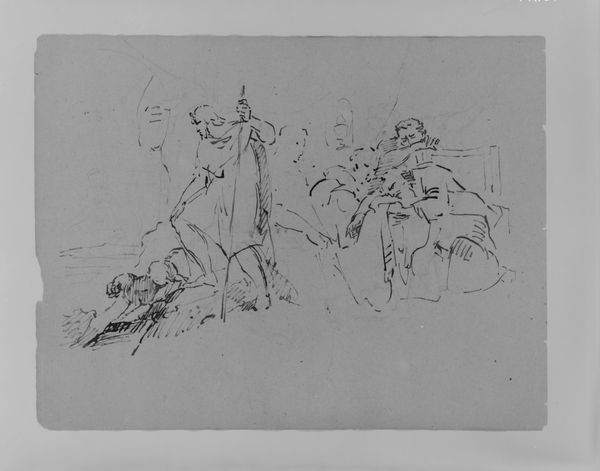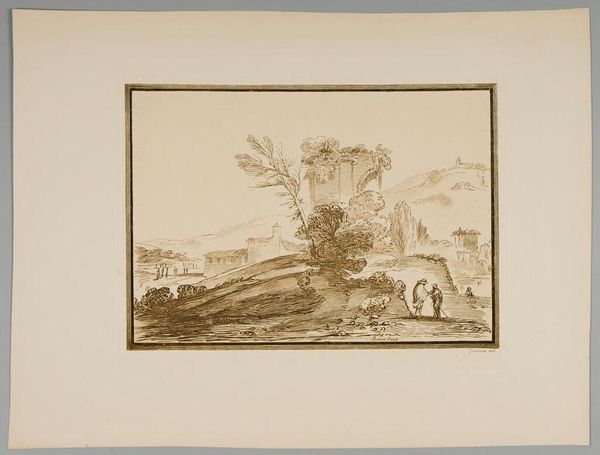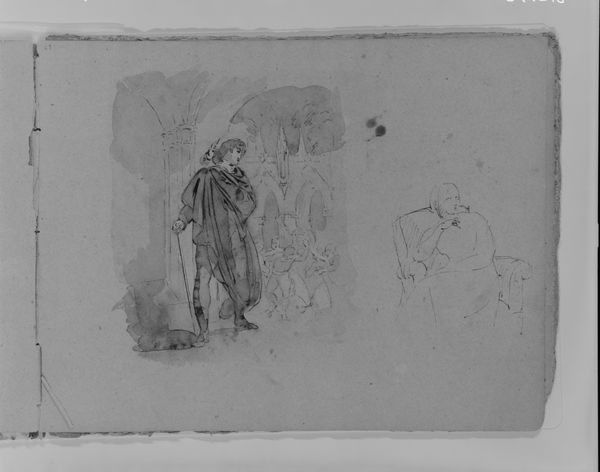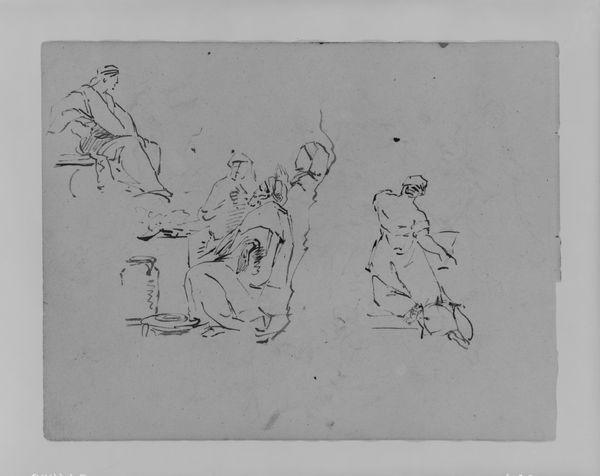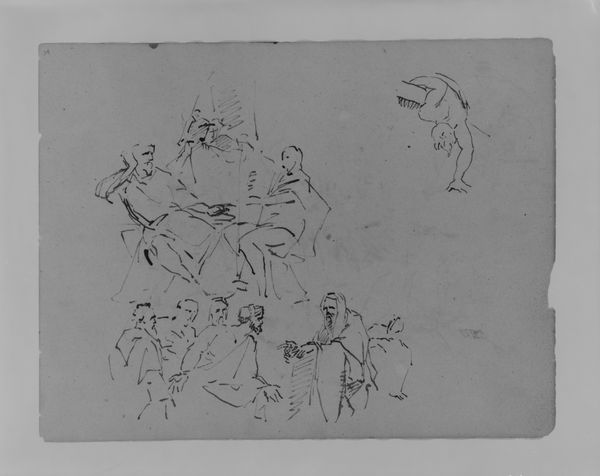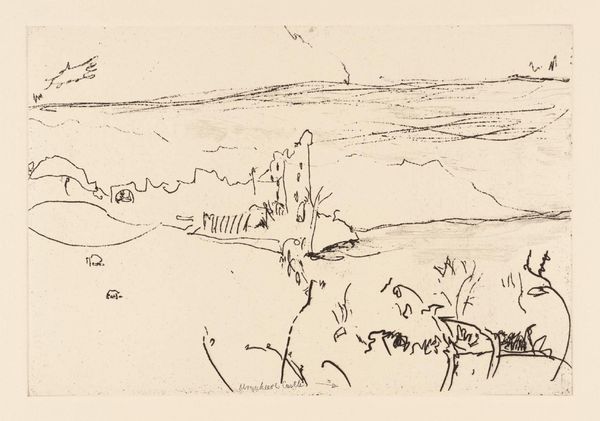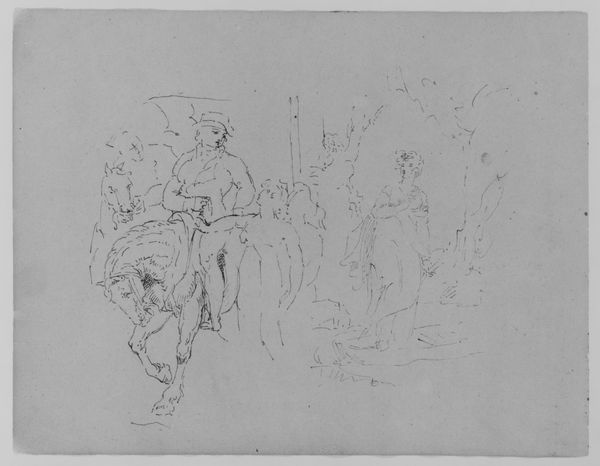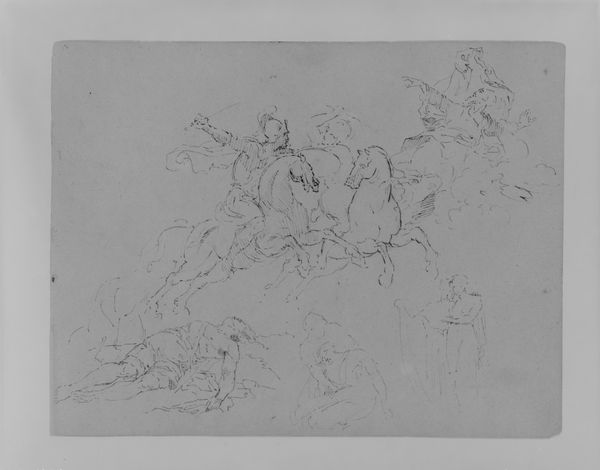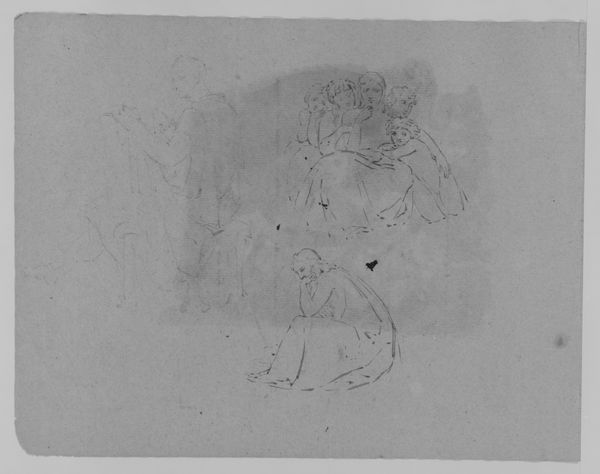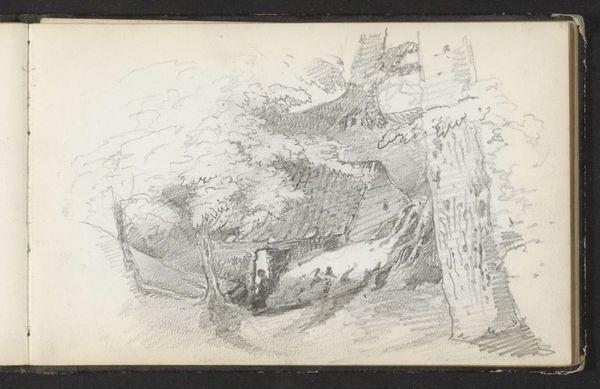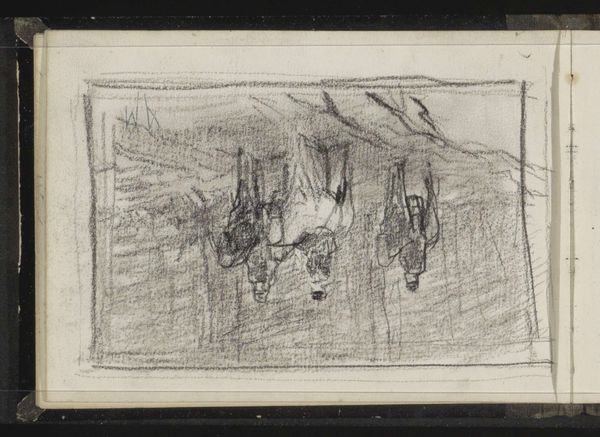
Drowned Man in Sea; Two Figures in Turkish Costume (from Sketchbook) 1810 - 1820
0:00
0:00
#
pencil drawn
#
amateur sketch
#
shape in negative space
#
negative space
#
pencil sketch
#
incomplete sketchy
#
bird
#
charcoal drawing
#
men
#
tonal art
#
remaining negative space
#
mixed medium
Dimensions: 9 x 11 1/2 in. (22.9 x 29.2 cm)
Copyright: Public Domain
Curator: Let's talk about "Drowned Man in Sea; Two Figures in Turkish Costume," a work on paper by Thomas Sully dating from between 1810 and 1820. Editor: My immediate sense is one of unease, even chaos. The darkness of the upper left panel depicting the drowning stands in such stark contrast to the seemingly calm figures to the right. The stark monochrome only amplifies the drama. Curator: That's interesting. The dichotomy you point out speaks volumes, doesn't it? I'm thinking about how representations of drowning, particularly during this period, often intersect with broader narratives of vulnerability, power, and perhaps even colonial anxieties when we consider the “Turkish costume” element. Editor: Precisely. I’m curious about Sully's choice of media here. It looks like graphite and ink or wash; materials readily available, suggesting perhaps a work executed in the moment or capturing a fleeting thought. There's something very raw and immediate about it. Curator: Absolutely, and that immediacy likely affects how we perceive the figures. Their portrayal, though sketchy, begs consideration: What socio-political implications do the figures evoke when placed alongside the imagery of death? Were the costumes acquired, traded, or stolen, what would that imply about the relations between them? Editor: Good point! Focusing on the production, how the varying degrees of finish imply a hierarchy of importance. The drowning scene is rendered with a dramatic painterly effect using what appears to be wash and perhaps some opaque white, in sharp contrast with the outlines used for the figures. There’s labor and resource implication there. The waves, seemingly swallowing the figure, mirror the erasure, literal and figurative, of so many. Curator: That tension between erasure and implied power—that’s really the crux of it. This piece reminds us that art, even in its most unassuming forms like a sketch, becomes a repository of complex narratives surrounding social, cultural, and political dynamics. Editor: It does force us to ask what stories get prioritized through artistic investment, doesn't it? Curator: Indeed. Reflecting on Sully's sketch, I am reminded that every deliberate artistic choice serves as a conscious encoding that needs continued decoding. Editor: Agreed, and through that careful examination of production, medium, and social implications we are that much closer to comprehending an artwork's weight.
Comments
No comments
Be the first to comment and join the conversation on the ultimate creative platform.


